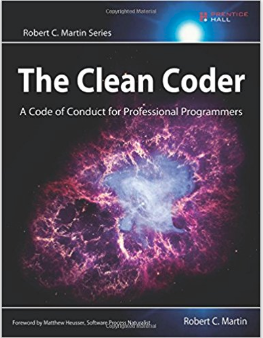Bens TNG-interner Blogpost
The Clean Coder – and why I don‘t like it
26. August 2018
(editiert von Martina Schäfer)
Robert C. Martin as an author is probably most known for “Clean Code“ […].

His book “The Clean Coder: A Code of Conduct for Professional Programmers” from 2011 looks at another perspective of today’s coding and tries to teach “what it means to behave as a true software craftsman”. In my own words: the social aspects of the daily work of a programmer.
What I like about the book
The real life stories of Martin reaching back into the 70s give a view into what it was like to be a programmer in those times – and how much more manual work it involved. Furthermore, he is open about how he failed and why.
I like the general idea of the chapters “Saying No” and “Saying Yes”. This is something important to learn. However, the examples are very artificial and hard to generalize…
Why I don’t like the book
Basically, I have 3 main complaint points about this book. Please be aware that they are my subjective opinion and bound to my everyday situations and experience as a Product Owner.
- I think the author sees Agile as a process to improve development and developers, not a way to change companies into a more human-centric and successful place. In particular, the book does not even go into the direction of Scrum mechanisms to cope with typical situations between stakeholders and development teams. This surprises as the book is from 2011 and Agile practices are widely accepted in the world of software.
- the examples for talks between “management” and “coders” are so extreme that I would rather change the project than recommending any technique to deal with these kind of unrealistic expectations.
- the book does not teach any techniques of reflection, how to give feedback, how to deal with conflicts, how to communicate, not even a slight bit of psychology. For me, this is a main aspect that every developer should look into. Personally, I benefited the most from learning about these.
Summary
To be honest, I think the whole learning point of this book could be brought down to 2 blog posts of maybe 10 pages with lots of links to people who explained the details much better than Martin. And 2 statements to keep in mind.
[…]
Blog Post 1
These are the 10 things you should think and read about as a professional software developer
Blog Post 2
Why I failed in my professional software developers life and what I learned from it
Statement 1
Say NO when you would like to say maybe
Statement 2
Usually, a YES comes with a set of conditions. Make them transparent.
